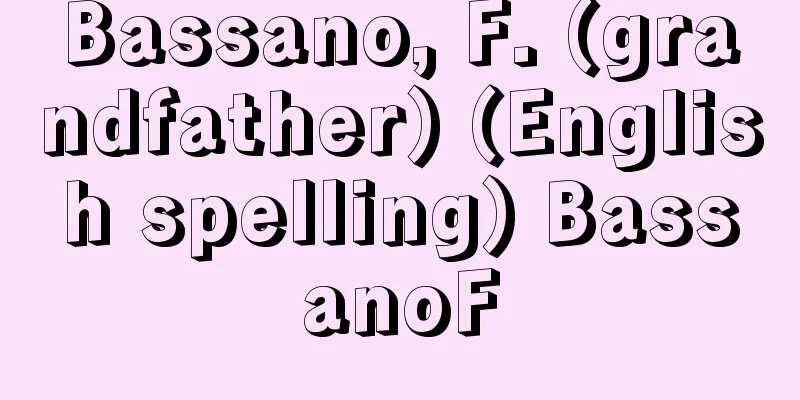Kikujutsu

|
Ki means "bunmawashi" (a circular movement), and koku means "ruler" (a ruler bent at a right angle), and the art of using these is called kikujutsu. It has the following three meanings: (1) Drawing methods for wooden building components Japanese wooden buildings are constructed by combining components of various shapes. Horizontal and vertical directions are easy, but carving timber into the desired shape according to the slope of the roof requires difficult three-dimensional geometric drawing. It becomes even more complicated when curving the eaves of the roof and making the rafters at the corners radiate out. The tool used for this drawing is a ruler that is still used today. It is an L-shaped metal ruler with markings in the form of a rafter on the front and twice that length on the back. As shown in , and the hook (ko) size at the crotch of 1 shaku (10 sun), that is, the amount of the slope (tan θ), is used as the basis, and lines are drawn directly on the timber based on the length and ratio of each part, without using trigonometric functions. When θ is 45 degrees, double the back grain is used ingeniously. It may be a technique that has been used since ancient times, but the beauty of the complex wooden structure is astonishing. The "Shoka Kakujutsu Shinsho" (1848) by Masaomi Heinouchi (1799-1856), a master carpenter of the Edo Shogunate, was the first book to give a mathematical basis to kikujutsu and to systematize it. It is called kakujutsu because it does not use rules. (2) A method of solving mathematical problems by drawing rather than calculating them At the beginning of "Shoka Kakujutsu Shinsho," there is a description of how to use a kane-shaku to perform everything from multiplication and division to square roots and square roots. Based on the similarity of right-angled triangles, the quantity in question is found on the diagram in terms of length. As the preface states, this is an approximate solution, but it is significant that an abacus is not used. A similar, more advanced book is Yoshida Shigenori's "Kikujutsu Zukai" (1820). Using rules and squares, it covers everything from multiplication and division to solving equations and drawing regular polygons, and even deals with three-dimensional figures. (3) Surveying techniques known as the Komo (Dutch) school This is a surveying technique that is said to have been taught to Higuchi Gon'emon by the Dutchman Caspar (also called Caspar) during the Kan'ei era (1624-1644). The main method is similar to modern planisphere surveying, and involves drawing a miniature map of the terrain on a measuring board with a line drawn through it. The rule for this technique is the Western compass, which is also used to measure the length and magnification of lines by spreading the compass legs. The main school from Higuchi is the Shimizu school, whose founder was Shimizu Sadanori, and all of the manuals are copies. Published works include "Ryojishinan" (1733) and "Ryojishinan kohen" (1754) by Murai Masahiro, who belongs to a different school. The latter is a book that compiles not only kikujutsu but also the surveying techniques of the first half of the Edo period. [Toshio Matsuzaki] "Oya Shinichi's commentary on 'Edo Science Classics Series 9: Land Guide' (1978, Kowa Publishing)" ▽ "Kano Katsushige's commentary on 'Edo Science Classics Series 16: Sumi-ku Hinagata/Kukujutsu Shinsho' (1978, Kowa Publishing)" ▽ "Muramatsu Teijiro's 'History of Carpentry Tools' (Iwanami Shinsho)" ©Shogakukan "> The Great Gate (illustration) Source: Shogakukan Encyclopedia Nipponica About Encyclopedia Nipponica Information | Legend |
|
規は円を描く「ぶんまわし」、矩は直角に曲がった物差し「差し金(がね)」「かね尺(曲尺)」のことであり、これらを用いる術を規矩術という。次の3通りの意味をもつ。 (1)木造建築の部材の作図法 日本の木造建築は、いろいろな形の部材を組み合わせて建造される。水平・垂直方向は容易であるが、屋根の傾斜に応じて材木を望む形に刻むのには、立体幾何的なむずかしい作図を必要とする。屋根の軒に反りをつける、隅の部分の垂木(たるき)を放射状に出すとなると、さらに複雑になる。その作図の道具は、現在も使われている差し金である。L字形の金属性の物差しで、表にはかね尺の寸、裏にはその倍の長さに目盛りが刻まれている。のような勾殳玄(こうこげん)(直角三角形)で1尺(10寸)の股に配する鉤(勾)の寸、すなわち勾配(tanθ)の量を基本にし、各部の長さ、比率を基に三角関数を用いずに直接材木に線を引く。θが45度のときは倍の裏目を巧妙に用いる。古くから行われてきた技術であろうが、複雑な木組みのみごとさには驚嘆すべきものがある。江戸幕府の大棟梁(とうりょう)、平内廷臣(へいのうちまさおみ)(1799―1856)の『匠家矩術新書』(1848)は、規矩術に初めて数理的な根拠を与え、体系づけた書である。規を使わないので矩術という。 (2)数学の問題を計算でなく作図で解く方法 『匠家矩術新書』の冒頭に、乗除から開平、開立(かいりゅう)までをかね尺で行う方法が記されている。直角三角形の相似などを基にして、問う量を長さで図上に求める。自序にあるように近似解法ではあるが、そろばんを用いないことに意味がある。同種の、より高度な書に吉田重矩(しげのり)『規矩術図解』(1820)がある。規と矩を用いて乗除から方程式解法、正多角形作図などを行い、立体図形をも扱っている。 (3)紅毛(オランダ)流と称される測量術 寛永(かんえい)年間(1624~1644)に樋口権右衛門(ひぐちごんえもん)がオランダ人カスハル(カスパルともいう)から伝授されたといわれる測量術である。おもな方法は現在の平板測量にあたり、見通した線で「量盤(けんばん)」上に地形の縮図を作成する。この術の規は西洋の「渾発(コンパス)」であり、脚を開いて線分の長さ、倍率を計る役目にも使われる。樋口からのおもな流れは、清水貞徳(さだのり)を祖とする清水流で、伝書はすべて写本である。刊本には、別の流れに属する村井昌弘(まさひろ)の『量地指南』(1733)、『量地指南後編』(1754)がある。後者は規矩術に限らず、江戸時代前半の測量術を集大成した書である。 [松崎利雄] 『大矢真一解説『江戸科学古典叢書9 量地指南』(1978・恒和出版)』▽『狩野勝重解説『江戸科学古典叢書16 隅矩雛形/矩術新書』(1978・恒和出版)』▽『村松貞次郎著『大工道具の歴史』(岩波新書)』 ©Shogakukan"> 勾殳玄〔図〕 出典 小学館 日本大百科全書(ニッポニカ)日本大百科全書(ニッポニカ)について 情報 | 凡例 |
Recommend
Austrian School (English: Österreichische Schule German)
Modern economics is said to have begun with the w...
Gerbrand Adriaenszoon Bredero
1585‐1618 Dutch poet and comic playwright. Born in...
Satsuma Province - Satsuma no Kuni
A province in the Kyushu region of the Saikaido. ...
Kasamaro - Kasanomarō
Years of birth: unknown Years of birth and death: ...
Alto Douro Grape Company
… In terms of economic policy, in order to break ...
Pisacane - Pisacane (English spelling) Carlo Pisacane
Italian revolutionary and political thinker. Born...
Girton College
...With the intervention of Parliament, the requi...
Aretas
…From the beginning of the 6th century, they rece...
Tanetaro Megata
Year of death: September 10, 1926 Year of birth: J...
Logbook - Koukainisshi
Among the various types of logbooks kept on board...
Great Battle Bridge - Ongase Bridge
…The Miyauchi River basin is a producer of iron s...
Maritime Traffic Safety Act
This law, Act No. 115 of 1972, aims to ensure saf...
Large silver-striped butterfly - Large silver-striped butterfly
...They are very similar in morphology and life c...
Anisotropic
The state in which physical quantities or properti...
Yamaguchi Prefecture - Yamaguchi
The prefecture at the western end of the Chugoku r...









